“So many great souls have passed off the scene. The world has changed. We are now faced with picking up the pieces and trying to put them into shape, document them so the present-day young generation can see what southern food was like. The foundation on which it rested was pure ingredients, open-pollinated seed—planted and replanted for generations—natural fertilizers. We grew the seeds of what we ate, we worked with love and care.” ~ Edna Lewis (“What is Southern?”)
For me, she’s the one. The more I learn about Edna Lewis, the more I love her.
Since today marks the 7th anniversary of her passing at age 89, it’s a good time to celebrate her remarkable achievements as an award-winning chef, cooking teacher, caterer, cookbook author and Grand Dame of Southern Cuisine with a love-in-your-mouth piece of her Warm Gingerbread. Mmmmm-mmmmm!
Miss Lewis, as she was always known, grew up in the small farming community of Freetown, which is located behind the village of Lahore in Orange County, Virginia (about 66 miles from where I live). Her grandfather founded Freetown with two other freed slaves and started the first area school in his living room.
Long before it became chic to advocate fresh, organic, seasonal ingredients and field-to-table cuisine, Edna and her fellow Freetown residents were enjoying a bucolic live-off-the-land existence — growing, harvesting and preserving their own food, gathering nature’s bounty (seeds, fruit, nuts), fishing the streams, hunting wild game in the woods, cultivating domestic animals.
In The Taste of Country Cooking (Knopf, 1976), a classic of Southern cuisine edited by the brilliant Judith Jones (also Julia Child’s editor), Edna shares recipes and reminiscences of the simple, flavorful, uniquely American, Virginia country cooking she grew up with, lovingly describing how they anticipated the select offerings of each season and celebrated special occasions like Christmas and Emancipation Day with full-out feasts.
We are reminded that there’s nothing better than a freshly picked sun-ripened apple, relishing a dish of Spring’s mixed greens (poke leaves, lamb’s-quarters, wild mustard), celebrating Summer’s bounty with deep-dish blackberry pies, apple dumplings, peach cobblers and pound cakes, sitting down to a Fall Emancipation Day dinner of Guinea Fowl Casserole, “the last green beans of the season and a delicious plum tart or newly ripened, fresh, stewed quince.” As Alice Waters says in her introduction, “sheer deliciousness that is only possible when food tastes like what it is, from a particular place, at a particular point in time.”
I grew up noticing the food feasts, picnics, church revival dinners with long white tablecloths. Families put out warm fried chicken, braised leg of mutton, thin slices of boiled Virginia ham. Green beans cooked in pork stock, beets in a vinaigrette sauce. English peas in cream. Baked tomatoes with crusty squares of bread on top. Fragrant corn pudding. Potato salad with a boiled dressing. Watermelon and cantaloupe pickles and relishes, preserves and jellies, and iced tea.
Edna learned to cook by watching her mother and Aunt Jenny, inheriting the values that would inform the rest of her life — a love of nature, a strong sense of family and community, the deep pleasure of living in harmony with the seasons, pride in family and cultural heritage, the satisfaction of honest hard work and savoring its delicious rewards.
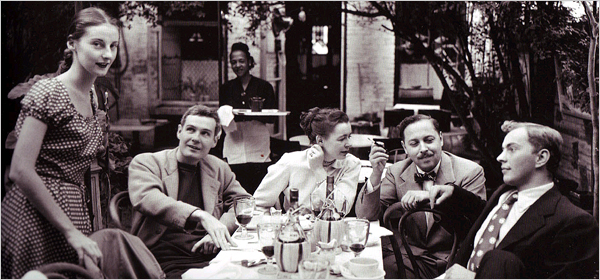
At age 16, after her father died, Edna left Freetown and eventually ended up in New York City, where after working at a few odd jobs, she partnered with antiques dealer John Nicholson, who opened Café Nicholson in the late 40’s. There, Edna was in her full glory as THE cook, quickly gaining a loyal following amongst artsy/bohemian types (Greta Garbo, Gloria Vanderbilt, Marlon Brando, Howard Hughes, Marlene Dietrich) who couldn’t get enough of her cheese soufflés, roast chicken, filet mignon and soon-to-be world famous chocolate soufflé. Ex-pat Southerners like William Faulkner and Truman Capote got the taste of home they so craved; Edna tells of how Truman (whom she called “cute”), often asked for biscuits, and Tennessee Williams, a regular who lived close by, walked her home.
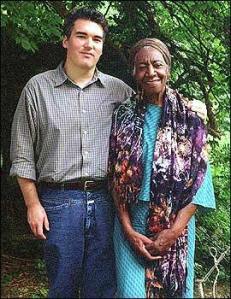
In all, Miss Lewis published four cookbooks, the last co-authored with her dear friend and cooking companion Scott Peacock, who cared for her during the last six years of her life. She received many awards and honors for her work, including an IACP Lifetime Achievement Award and the James Beard Living Legend Award. She re-defined Southern cuisine and its finer nuances, forever banishing the longheld stereotype that it mainly consists of greasy fried chicken and watery greens.
Southern is a seafood gumbo of crab, okra, tomatoes, scallions, onions, green pepper, bacon, garlic, and herbs. Southern is fresh-made corn fritters, light and crisp enough to fly away. Southern is an okra pancake in a cornmeal batter. Southern is a platter of deviled crabs prepared with soaked slices of white bread torn and mixed with chopped onion, fine-cut scallions, melted butter, fresh-ground black pepper, cayenne, eggs, and the best crabmeat. Baked in the oven, served hot, a morsel to die over. Southern is a pitcher of lemonade, filled with slices of lemon and a big piece of ice from the icehouse, and served with buttermilk cookies. Southern is a delicious chicken salad at a bride’s luncheon.
She is remembered as a strikingly elegant, stylish woman with dangling earrings who designed and made all her own clothes from West African batik fabrics, a soft-spoken woman of quiet dignity who made you want to savor her every word. She became a famous chef at a time when female chefs, let alone African American ones, were few and far between.
She was the first person in her family to vote, took great pride in working for FDR’s first presidential race, and marched with Martin Luther King, Jr. in the Poor People’s March in Washington (1968). She liked Bessie Smith, Jack Daniel’s, and could tell when a cake was done just by listening to it.
And how beautifully she describes the true origins of Southern cooking:
The early cooking of southern food was primarily done by blacks, men and women. In the home, in hotels, in boardinghouses, on boats, on trains, and at the White House. Cooking is hard and demanding. It was then, and it still is now. What began as hard work became creative work. There is something about the South that stimulates creativity in people, be they black or white writers, artists, cooks, builders, or primitives that pass away without knowing they were talented. It is also interesting to note that the South developed the only cuisine in this country. Living in a rural setting is inspiring: Birds, the quiet, flowers, trees, gardens, fields, music, love, sunshine, rain, and the smells of the earth all play a part in the world of creativity. It has nothing to do with reading or writing. Many of those cooks could not read or write.
Now, would you like another piece of her Warm Gingerbread with Sweetened Whipped Cream?
* * *
♥ LET’S EAT ♥
This is the last recipe in The Taste of Country Cooking, part of the “Winter” section. A revised version of it, without the lard, is also included in Lewis’s and Peacock’s The Gift of Southern Cooking (Knopf, 2003), and is called “Dark Molasses Gingerbread Cake with Soft Whipped Cream.”
In The Taste of Country Cooking, many of the recipes call for the now obsolete Royal Baking Powder, with Miss Lewis’s suggestion that you make your own baking powder from “two parts cream of tartar to one part baking soda,” since the chemicals in today’s widely available double acting baking powder (aluminum-sulfate-based) leaves a metallic “tingle” on the tongue.
So I made my own baking powder and replaced the 1/4 cup of lard with butter; I see from the revised recipe that I could have simply used 1/2 cup (1 stick) of butter instead.
As it turns out, the extra butter didn’t hurt one bit! This was easily the best gingerbread I’ve ever tasted. There is no refined sugar in the gingerbread itself, only molasses, and with a full tablespoon of ground ginger along with the cinnamon and cloves, you can just imagine how good the kitchen smelled when this beauty was baking!
We’re talking about a dark, moist, slightly chewy pudding-like gingerbread, so delicious warm with a generous dollop of whipped cream, perhaps even better the next day when all the spices and molasses have had time to “mellow and meld.”
In her headnote, Miss Lewis says, “I remember Mama dipping a teacup into the stone crock of molasses and spooning out the sugary syrup into the pungent ginger batter. Warm gingerbread with fresh, skimmed, heavy cream was an exotic treat after a meal of fresh pork or game on a chilly fall evening.” Hello!
WARM GINGERBREAD WITH SWEETENED WHIPPED CREAM
(adapted from The Taste of Country Cooking)
2 cups all-purpose flour
1/4 teaspoon baking soda
2 teaspoons homemade baking powder
1/2 teaspoon ground cloves
1 tablespoon powdered ginger
1 teaspoon cinnamon
1/2 teaspoon salt
1/2 cup butter (1 stick) and 1/4 cup lard mixed together
1 cup boiling water
2 eggs, beaten
1-1/2 cups molasses
1. Preheat the oven to 350°F.
2. Butter and flour an 8 x 8 x 2-inch baking pan.
3. In a large mixing bowl, sift flour, soda, baking powder, cloves, ginger, cinnamon, and salt.
4. Melt the butter (and lard, if used) in the boiling water, then whisk into the floured mixture. Stir well, then add beaten eggs.
5. Continue stirring, add molasses, and stir well again.
6. Spoon the batter into the baking pan and bake for 35 to 40 minutes, or until a skewer inserted in the center comes out clean.
For the Whipped Cream:
1 cup heavy whipped cream
2 teaspoons vanilla
2 tablespoons sugar
Whip the chilled cream until it forms soft peaks but is not too stiff, then add sugar and vanilla. Serve with warm gingerbread.
Note: I used 3/4 cup butter and 2 cups unbleached flour. You can also use 1/2 cup butter with 2 cups bleached all-purpose flour, or, 1/2 cup butter with 1-2/3 cup unbleached flour.
Homemade Baking Powder
1/4 cup cream of tartar
2 tablespoons baking soda
Sift the ingredients together 3 times, transfer to a clean, tight-sealing jar, and store at room temperature, away from sunlight, for up to 6 weeks.
* * *
♥ SECOND HELPINGS ♥
♥ Enjoy this wonderful award-winning documentary about Miss Lewis, “Fried Chicken and Sweet Potato Pie,” written, produced and directed by Bailey Barash. You’ll get to hear her voice and feel her essence — it’s spiritual, calming and comforting. As so many others have said, she has a great face — a presence — and was truly a luminous individual. You’ll also get to hear from Scott Peacock about their unusual, abiding friendship. Well worth 20 minutes of your time.
* * *
♥ I also highly recommend her essay, “What is Southern?”, which I freely quoted from in this post. A beautiful piece of writing!
♥ Check out her cookbooks. Her first, The Edna Lewis Cookbook, is available on the secondary market and is now a collector’s item.
♥ Yes, there is a children’s picture book about Miss Lewis written and illustrated by Robbin Gourley, Bring Me Some Apples and I’ll Make You a Pie (Clarion, 2009), which I reviewed here.
When the weather gets warmer, I hope to visit Lahore and Unionville to see where Miss Lewis grew up and was finally laid to rest.
* * *
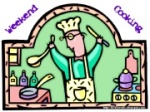 This post is being linked to Beth Fish Read’s Weekend Cooking, where all are invited to share their food related posts. Put on your best bib and apron, and come join the fun!
This post is being linked to Beth Fish Read’s Weekend Cooking, where all are invited to share their food related posts. Put on your best bib and apron, and come join the fun!
———————————————
Copyright © 2013 Jama Rattigan of Jama’s Alphabet Soup. All rights reserved.

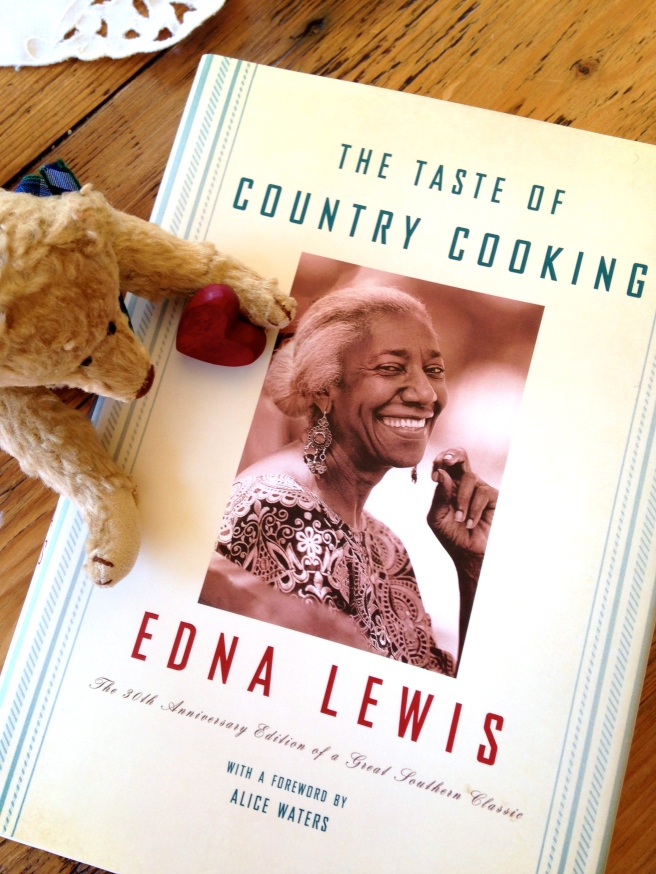
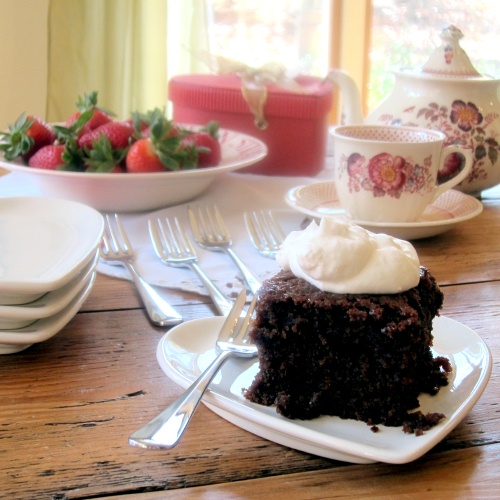
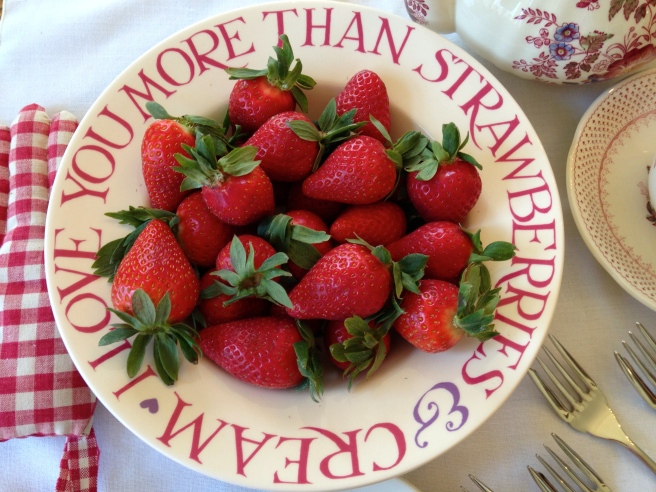
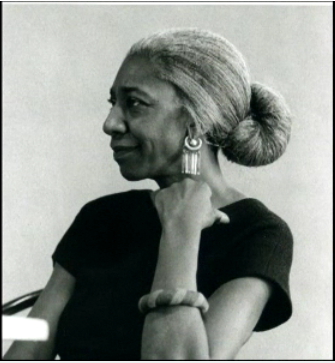

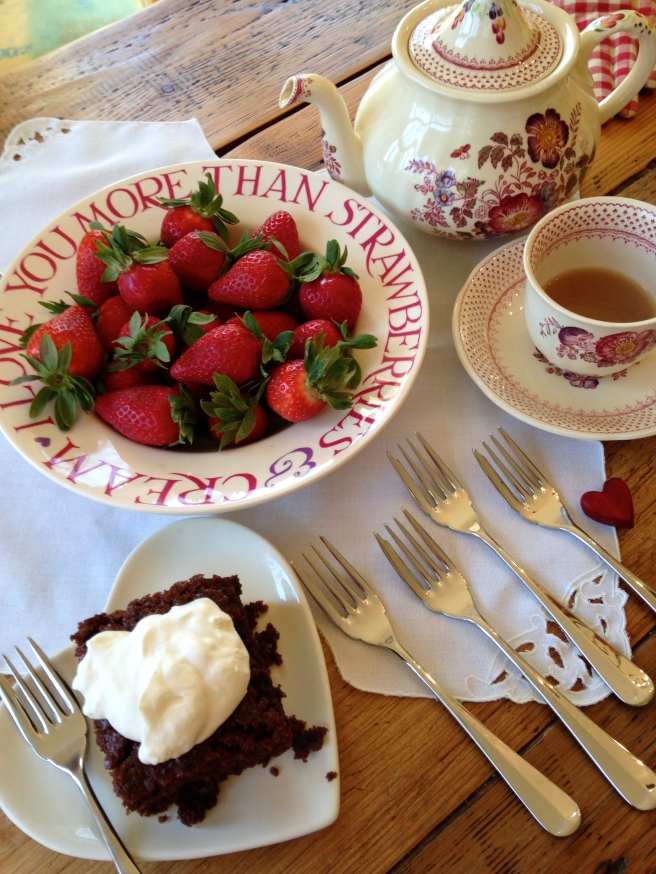
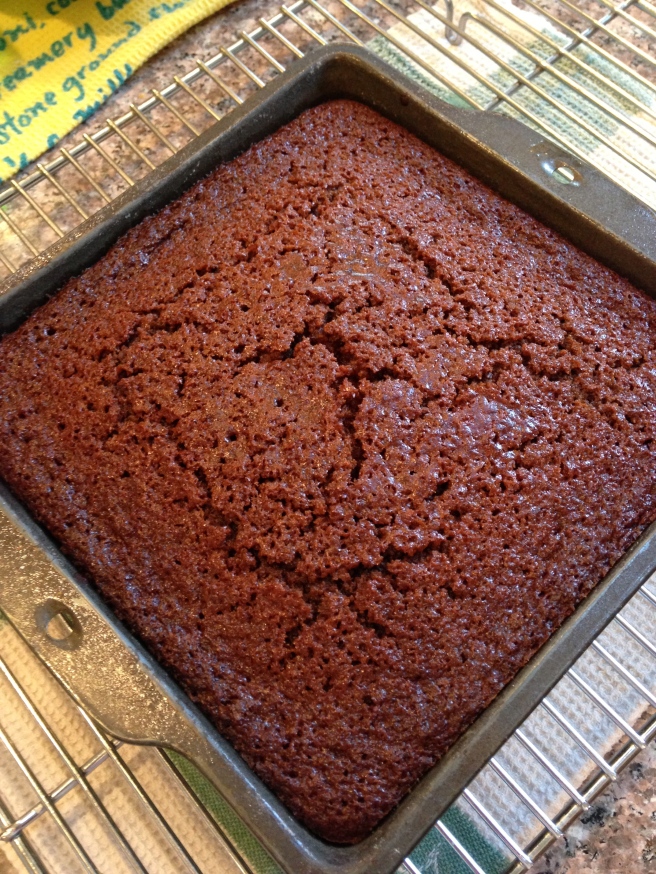
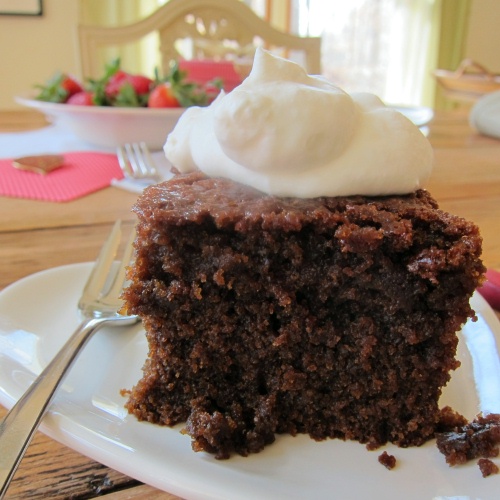
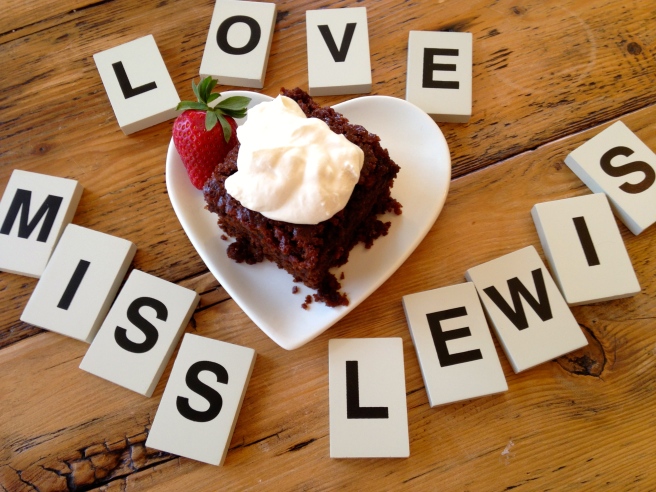
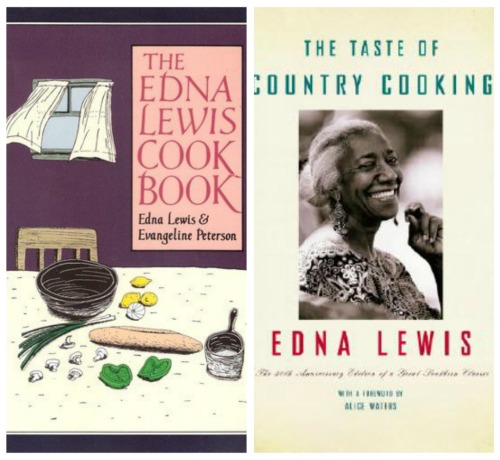

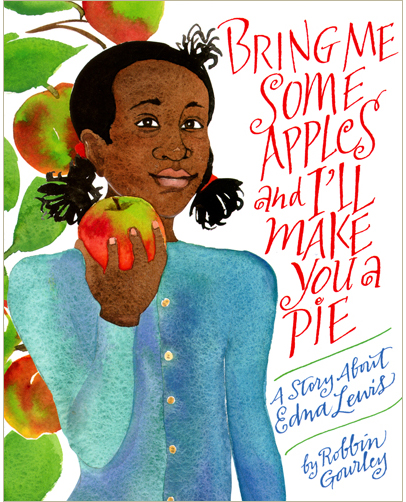
This is my all-time favorite cookbook–I have the 1976 edition. I bought it for the stories (the recipes are too hard for me) and the sense of community and family that comes through her writing so clearly and honestly. I have lots of cookbooks I buy for the pictures and stories, but this one is the one I pull out and take to bed to read. I would have loved to have dinner-on-the-ground with Miss Lewis and her family.
I live close to Orange and have been to Unionville often. Freetown is hard to find–it’s not even on my very detailed old Virginia topo map. Maybe I’ll try again soon. Thanks for the head’s up on her essay–I’m on it!
LikeLike
I was thinking about you and wondering about Unionville. Have you been to Lahore? Is it still there? I know that her funeral service was held at Bethel Baptist in Unionville. I’ve been trying to confirm whether she was buried at Bethel Cemetery or not. There’s a picture of her in the last cookbook with Scott, showing her standing by one of the remaining chimneys from Freetown. It doesn’t look like a place anyone could find these days. 🙂
LikeLike
I love the Robbin Gourley book so much! And I love love love warm gingerbread. But can I bring myself to use lard? Even though I know butter is kind of lard in its own way? Gaaaah! I don’t think I can do it!
LikeLike
You don’t have to use lard — I didn’t want to use it. You can use one stick of butter with two cups bleached all-purpose flour. Luisa (The Wednesday Chef) used cake flour with butter.
LikeLiked by 1 person
Oh, I didn’t get that your “Note” referred to the lard because – how weird – that flour can substitute for it! I don’t get it! :–)
LikeLike
Sorry for the confusion. I didn’t realize I could have just used one stick of butter (as per E&S’s revised recipe), so I used one stick + another half stick ( as a substitute for the lard). This worked for me with my unbleached flour as far as moistness is concerned.
The revised recipe calls for only one stick of butter when using bleached flour — but advises to decrease the flour by 1/3 cup if you’re using unbleached flour or else the gingerbread will turn out drier.
I hope I’m not confusing you any further . . .
LikeLike
I am so in love with Edna Lewis!! I have all those books but the kids’ book. How did I miss that???? Off to remedy the situation.. Awesome post! (as always)
LikeLike
She’s just so easy to love, isn’t she?
Robbin’s book is just lovely — beautiful watercolors and she interweaves folk rhymes with her narrative. There are about four or five Southern-style recipes in the back from her Sugar Pie and Jelly Roll Cookbook too.
LikeLike
I was just reminiscing with an older relative about my grandmother (the biscuit one, remember?) & wishing I could go back to taste all her cooking, but especially the fried chicken & the beets. She raised her own chickens & we thought the chicken heavenly, & I suppose it was. The beets were grown & picked early & served in a vinaigrette sauce. How did they do it all I wonder? I didn’t know much about Edna until your post, Jama. What a story! I’m going to have to own one of these cookbooks. They sound wonderful. Thank you.
LikeLike
It *is* amazing how much our grandparents’ generation were able to do — so many things from scratch without fancy equipment, and they were self-sufficient in ways we’d never dream of being today. My grandmother also had a sizable vegetable garden and big yard; I think I took it for granted back then.
It’s really wonderful that you still make your grandmother’s biscuits. Fresh beets are really a treat. Edna talks about picking vegetables fresh the garden first thing each day. We miss being able to grow any fresh veggies or even have flowers at our present house because of the deer and inadequate sunlight. Farm markets are the next best thing.
I do hope you get one of Edna’s cookbooks. The Taste of Country Cooking is a classic, and you’ll like it if you’re interested in her stories as well as recipes. The last book she co-authored with Scott is more of a standard cookbook. I haven’t seen the other two yet, only know that the first has recipes she made at Cafe Nicholson.
LikeLike
Lovely post! PS You are the Queen of Tablescapes!
LikeLike
Thanks so much, Sandy. Glad you enjoyed reading about Edna :).
LikeLike
Every time you have a post, I leave with such a good feeling. There is so much joy, learning and food here, it’s enough to make someone want to fly. Edna Lewis was such a gifted chef and we are the better for her books. I do need to get the Bring Me Some Apples title. That went under my radar but again, you lead me to it. Thanks for another wonderful, delicious look at a person and her books worth knowing.
LikeLike
Thanks for the lovely and generous comment, Margie! I’m so lucky to have blog readers like you who are so attentive and encouraging and share my enthusiasm for books, food and special people. Miss Lewis is such an inspiration — I can’t imagine her courage going all the way to NYC at such a young age. She joined the Communist party and married a Communist and was apparently quite the political activist in her own quiet way through her food work.
Much later, after her husband died, she met Scott and they were known as the “Odd Couple” of Cuisine; they became family; I love that food brought them together and enabled them to connect on such a deep level.
LikeLike
A post to lift the heart, Jama. I need to read more Edna Lewis cookbooks! And make that gingerbread, too. (I’ve made my own baking powder before, and will make a point of doing it for that.)
>>> could tell when a cake was done just by listening to it <<<
LOVE.
LikeLike
I loved that about her too! She learned that trick from her mother :).
I do hope you make the gingerbread sometime — a good reason to indulge in some whipped cream too :).
LikeLike
Oh, JAMA. I am so ashamed of never having heard of this woman, and here I call myself having written a novel about a girl who wanted to be a chef!!!!
History always has so much better characters to write about than our imaginations; truth, being more awesome, than fiction, almost every time.
LikeLike
But . . . you read and even commented on my review of Robbin’s picture book 3 years ago, so Miss Lewis must be tucked away in your mind someplace. Time to bring that memory out and make one of her recipes. 🙂
LikeLike
Oh!!! Hahaha!
Well, now that I think about it, I remember the PICTURE BOOK, but I feel like I should have known more about her by now… and followed up like you did!! *blush*
LikeLike
Jama, you are absolutely right: She’s the one! My mother always made her own baking powder the way Miss Lewis said to do. What a lovely tribute you’d done.
LikeLike
Smart mother! Thanks for reading :).
LikeLike
Wow! She sounds like a good cook!
LikeLike
I want to make more of her recipes!!
LikeLike
A beautiful post full of comforting goodness.
I do hope someone checked Cornelius’ ID before he got a hold of that J.D. He looks far too young to be of legal drinking age.
LikeLike
LOL. Cornelius is older than you think. I got him in 1983!! I’m the one who needs an ID 🙂 . . .
LikeLike
Wow, oh wow that looks so good! I must confess that I’ve never heard of Edna Lewis, but I would eat that gingerbread up in a second. Thanks for sharing (and p;s. I love your strawberry bowl–so pretty!)
LikeLike
The strawberry bowl is Emma Bridgewater — can’t get enough of her stuff!
I didn’t know about Miss Lewis either until about 3 years ago, reading that children’s picture book. I’m looking forward to learning more and more about her now. 🙂
LikeLike
A delightful post!
And that gingerbread looks wonderful.
LikeLike
The gingerbread was yummy. We finally finished off that batch the other day. It stayed moist for several days. 🙂
LikeLike
what a great story to go with the recipe – I’ll have to look her up and enjoy her recipe books
LikeLike
Do look her up — she’s quite inspiring all around.
LikeLike
I feel foolish, I have not heard of Edna Lewis. Thanks for enlightening me and sharing her marvelous story.
LikeLike
No need to feel foolish — you know about her now, and that’s what counts!!
LikeLike
Fantastic post. I hadn’t heard of Edna Lewis either – I’m going to follow up and find out more.
LikeLike
Yay! Glad you’re interested in learning more. Of course the best way is to start making her recipes :).
LikeLike
I had never heard of Edna Lewis until now! Thank you for such a wonderful post and I think this gingerbread will become a favorite!
LikeLike
Do make the gingerbread sometime. You’ll love it ! 🙂
LikeLike
Wow your pictures are amazing! This sounds like an incredible cookbook, and an incredible lady!
LikeLike
She’s definitely one-of-a-kind, and her story is inspiring and so interesting. I love reading about all her family traditions.
LikeLike
Emma Lewis has a wonderful serene look on her face. You just know her food tastes good. I love that 1949 photo — Donald Windham reminds me of Han Solo, Tennessee Williams reminds me of Langston Hughes, and Gore Vidal makes me think of Jay Gatsby! I have an overactive imagination.
LikeLike
There’s definitely something timeless, classic and serene about Edna’s face. It’s like the face of the ages or something. Tennessee reminds you of Hughes? Interesting. Will have to study the photo again.
LikeLike